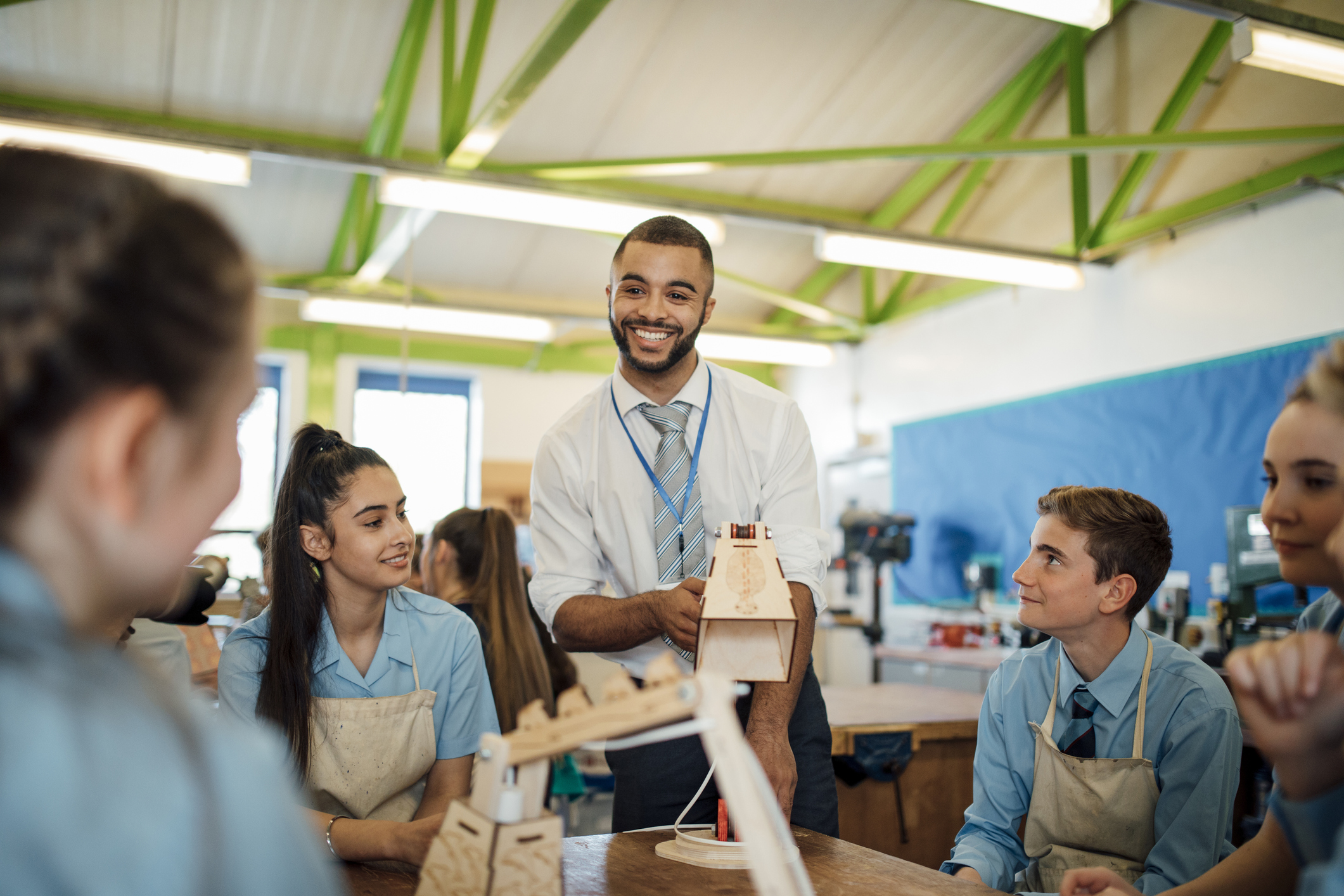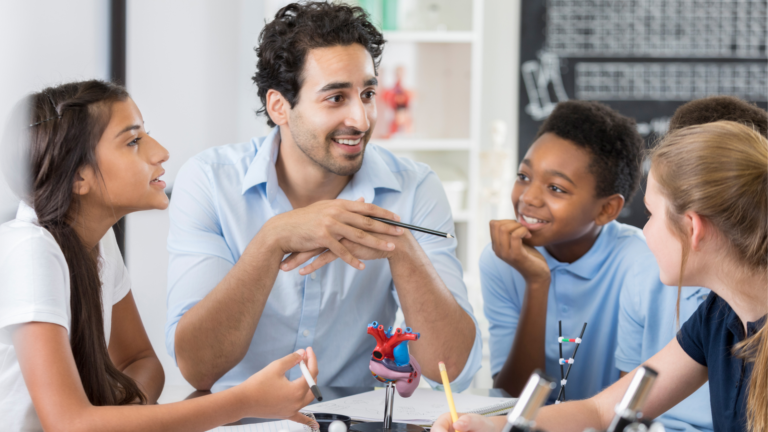Welcome to our blog post on improving attention and focus in students by engaging their executive functions. As educators, we understand the challenges of capturing and maintaining students’ attention in the classroom. With the increasing use of digital devices and the constant bombardment of information, it has become even more crucial to equip students with the necessary skills to focus and concentrate on their learning.
In this blog post, we will explore the importance of executive functions in learning and discuss strategies to improve students’ attention. We will also delve into techniques to enhance students’ focus and how to engage their executive functions effectively. Additionally, we will look at ways to monitor and evaluate the progress of these techniques and make necessary adjustments based on evaluation.
Understanding the role of executive functions in learning is essential to improving attention and focus. These cognitive processes, which include skills like planning, organization, self-control, and problem-solving, play a significant role in students’ ability to pay attention and engage in their learning effectively. By recognizing and addressing these executive functions, we can help students develop the necessary skills to improve their attention and focus.
One of the key aspects we will discuss is the significance of student focus in learning. When students are focused, they can absorb information more effectively, make connections, and retain knowledge for longer periods. We will explore various effective strategies to boost focus, including techniques such as mindfulness, goal-setting, and active learning methods.
Furthermore, we will delve into practical applications of these focus-enhancing strategies in the classroom. By incorporating activities and exercises that stimulate executive functions, educators can create an environment that promotes active engagement and deep learning. We will provide examples of how to integrate these techniques into lesson plans and highlight their benefits.
Monitoring and evaluating students’ progress is crucial to ensure the effectiveness of the implemented techniques. We will discuss how to track students’ improvement in attention and focus and offer suggestions for evaluation methods. By regularly assessing the impact of these strategies, educators can make informed decisions and adapt their approaches to better suit their students’ needs.
Improving attention and focus in students requires a multifaceted approach that takes into account the role of executive functions, employs effective strategies, and continuously monitors progress. In this blog post, we aim to provide you with valuable insights and practical techniques that you can implement in your classroom to engage students’ executive functions and enhance their attention and focus.
So, let’s dive in and explore the world of improving attention and focus through techniques for engaging students’ executive functions!
Understanding the Importance of Executive Functions in Learning
Executive functions are a set of cognitive processes that enable individuals to plan, organise, problem-solve, and regulate their behaviour. These functions play a vital role in students’ ability to pay attention, stay focused, and engage in their learning effectively. Understanding the importance of executive functions in learning is crucial for educators to support students in developing these skills.
1.1 The Role of Executive Functions in Learning
– Executive functions encompass a range of mental processes, including working memory, cognitive flexibility, inhibitory control, and self-regulation.
– Working memory allows students to hold and manipulate information in their minds, enabling them to follow instructions, solve problems, and make connections between concepts.
– Cognitive flexibility refers to the ability to switch between different tasks or perspectives, adapt to new situations, and think creatively.
– Inhibitory control involves suppressing impulsive behaviours and distractions, allowing students to focus on relevant information and tasks.
– Self-regulation encompasses managing emotions, setting goals, planning, and monitoring progress towards achieving those goals.
1.2 The Impact of Executive Functions on Attention and Focus
– Executive functions are closely linked to attention and focus. Students with well-developed executive functions are better able to filter out distractions and sustain their attention on tasks.
– Weak executive functions can result in difficulties with maintaining attention, being easily distracted, and struggling to ignore irrelevant stimuli.
– Students with strong executive functions are more likely to engage in deep learning, make connections between concepts, and exhibit higher levels of academic achievement.
1.3 Development of Executive Functions
– Executive functions continue to develop throughout childhood and adolescence, with significant growth occurring during early childhood and into adolescence.
– Factors such as genetics, environment, and experiences can influence the development of executive functions.
– It is essential for educators to understand the developmental trajectory of executive functions to tailor their instructional strategies accordingly.
1.4 Implications for Teaching and Learning
– Recognizing the importance of executive functions in learning can guide educators in designing instructional approaches that support the development of these skills.
– By integrating activities and strategies that target executive functions, educators can create an environment that promotes attention, focus, and deep engagement in learning.
– Understanding the individual differences in students’ executive functions can help educators provide appropriate support and accommodations to facilitate their learning.
By understanding the role of executive functions in learning, educators can implement targeted strategies and techniques to improve students’ attention and focus. In the following sections, we will explore various strategies and practical applications to enhance students’ executive functions and engage them effectively in the learning process.
Strategies to Improve Students’ Attention
Improving students’ attention is a crucial aspect of promoting effective learning. In this section, we will explore why improving attention is essential and discuss various tools and techniques that educators can employ to enhance students’ attention.
0.1 Why Improving Attention is Crucial
– Attention is the gateway to learning. When students are unable to focus or sustain their attention, their ability to absorb information and engage in meaningful learning is compromised.
– Attention is essential for encoding and storing information in memory. When students are attentive, they are more likely to remember and recall the information later.
– Attention is a prerequisite for critical thinking and problem-solving skills. Students need to be able to focus on relevant information, analyze it, and draw connections to make informed decisions.
0.2 Tools and Techniques for Enhancing Attention
– Mindfulness: Mindfulness exercises, such as deep breathing, meditation, and body scan techniques, can help students develop awareness of their attention and train them to redirect it when it wanders.
– Environmental Modifications: Creating a conducive learning environment, free from distractions, can significantly improve students’ attention. This can include arranging the classroom layout, minimizing noise, and providing visual cues for focus.
– Chunking and Organisation: Breaking down information into smaller, manageable chunks and organising it in a structured manner can improve students’ attention and make the content more digestible.
– Multisensory Learning: Engaging multiple senses through hands-on activities, interactive technology, and visual aids can enhance students’ attention and make learning more engaging.
– Active Learning Strategies: Incorporating active learning techniques, such as group discussions, role-playing, and hands-on experiments, can capture students’ attention and promote deeper engagement with the subject matter.
– Technology Integration: Utilising educational technology tools, such as interactive whiteboards, educational apps, and gamified learning platforms, can provide interactive and engaging learning experiences that enhance attention.
0.3 Applying Attention-Boosting Techniques in the Classroom
– Educators can introduce attention-boosting techniques during classroom instruction to help students develop sustained focus and attention skills.
– Incorporating regular brain breaks and physical movement activities can help rejuvenate students’ attention spans and combat restlessness.
– Implementing visual schedules and clear instructions can provide structure and assist students in staying on task.
– Utilising engaging and interactive teaching methods, such as storytelling, real-life examples, and hands-on demonstrations, can capture students’ attention and maintain their interest.
By implementing these strategies and techniques, educators can create an environment that supports and enhances students’ attention. In the next section, we will explore techniques to enhance students’ focus, which goes hand in hand with attention in promoting effective learning.
Techniques to Enhance Students’ Focus
Enhancing students’ focus is a critical aspect of promoting deep engagement and effective learning. In this section, we will explore the significance of student focus in learning, discuss effective strategies to boost focus and provide practical applications of these techniques.
1.1 Significance of Student Focus in Learning
– Focus allows students to concentrate on the task at hand, enabling them to absorb information, make connections, and engage in critical thinking.
– When students are focused, they are more likely to retain information in their long-term memory, leading to better recall and application of knowledge.
– Improved focus promotes active learning, as students actively participate in discussions, ask questions, and seek a deeper understanding of the subject matter.
1.2 Effective Strategies to Boost Focus
– Goal-Setting: Encouraging students to set clear goals for their learning can enhance their motivation and focus. Goals provide a sense of direction and purpose, allowing students to stay on track.
– Time Management: Teaching students effective time management skills helps them prioritise tasks, allocate appropriate time for different activities, and avoid procrastination, leading to improved focus.
– Self-Regulation Techniques: Teaching students self-regulation skills, such as self-monitoring, self-reflection, and self-control, empowers them to manage distractions and maintain focus.
– Active Listening: Engaging students in active listening techniques, such as paraphrasing, summarizing, and asking clarifying questions, promotes focused attention and comprehension.
– Visualisation: Encouraging students to visualise concepts or create mental images helps improve focus by connecting abstract ideas to concrete representations.
– Mnemonic Devices: Introducing mnemonic strategies, such as acronyms, acrostics, and visualisation techniques, aids in memory retention and enhances focus during information processing.
– Breaks and Movement: Incorporating short breaks and physical movement activities into the learning routine helps rejuvenate students’ focus and combat mental fatigue.
– Minimizing Distractions: Creating a distraction-free environment by reducing external stimuli, such as turning off mobile devices or limiting access to distracting websites, can significantly improve focus.
1.3 Practical Application of Focus-Enhancing Strategies
– Integrating focus-enhancing strategies into lesson plans and instructional activities can help students develop and maintain focused attention.
– Providing clear learning objectives and outlining the steps required to achieve them helps students understand the purpose of their tasks and maintain focus.
– Incorporating engaging and interactive teaching methods, such as multimedia presentations, hands-on experiments, and real-world examples, captures students’ attention and promotes sustained focus.
– Encouraging active student participation through discussions, debates, and collaborative group work fosters a focused and engaging learning environment.
By implementing these techniques to enhance students’ focus, educators can create a conducive learning environment that promotes deep engagement and meaningful learning experiences. In the next section, we will explore how to engage students’ executive functions, which are closely intertwined with attention and focus, to further enhance their learning outcomes.
Engaging Students’ Executive Functions
Engaging students’ executive functions is crucial for promoting active learning, critical thinking, and problem-solving skills. In this section, we will explore the role of executive functions in learning, discuss techniques to engage students’ executive functions and provide practical examples of incorporating executive function-stimulating activities in lesson plans.
2.1 Understanding the Role of Executive Functions in Learning
– Executive functions are cognitive processes that enable individuals to plan, organise, problem-solve, and regulate their behaviour.
– These functions play a vital role in students’ ability to pay attention, set goals, manage time, and make decisions.
– Executive functions are closely linked to academic achievement, as they facilitate higher-order thinking skills and self-regulated learning.
2.2 Techniques to Engage Students’ Executive Functions
– Goal-Setting and Planning: Encouraging students to set clear goals, break them down into manageable tasks, and create action plans to engage their executive functions of goal-directed behaviour and planning.
– Metacognition and Reflection: Promoting metacognitive strategies, such as self-reflection, self-questioning, and self-assessment, enhances students’ executive functions related to self-regulation, monitoring, and evaluating their learning.
– Problem-Solving Activities: Incorporating problem-solving tasks that require students to identify problems, analyze information, generate solutions, and evaluate outcomes engages students’ executive functions of critical thinking, cognitive flexibility, and decision-making.
– Cognitive Flexibility: Introducing activities that challenge students to think from different perspectives, consider alternative solutions, and adapt their thinking engages their executive functions of cognitive flexibility and adaptability.
– Self-Control and Impulse Management: Providing opportunities for students to practice self-control, delay gratification, and manage impulsivity strengthens their executive functions related to inhibitory control and self-regulation.
– Collaborative Learning: Engaging students in collaborative group work and discussions fosters the development of executive functions such as teamwork, communication, and negotiation skills.
2.3 Incorporating Executive Function-Stimulating Activities in Lesson Plans
– Designing Learning Tasks: Creating learning tasks that require students to plan, organise, and analyse information engages their executive functions. For example, assigning projects that involve research, data analysis, and presentation skills.
– Scaffolding and Modeling: Providing scaffolding and modelling techniques helps students develop their executive functions by gradually transferring responsibility and teaching them how to plan, organize, and self-regulate their learning.
– Using Graphic Organisers: Incorporating graphic organizers, such as concept maps, flowcharts, and Venn diagrams, helps students visually organise information, aiding their executive functions of organisation and categorisation.
– Gamification: Using gamified learning approaches, such as educational games or simulations, can engage students’ executive functions by requiring decision-making, strategic thinking, and problem-solving.
By actively engaging students’ executive functions in the learning process, educators can foster students’ cognitive development, enhance their problem-solving skills, and promote self-regulated learning. In the next section, we will explore how to monitor and evaluate the progress of these techniques to ensure their effectiveness.
Monitoring and Evaluating the Progress
Monitoring and evaluating the progress of the implemented techniques is crucial to ensure their effectiveness in improving students’ attention and focus. In this section, we will discuss how to monitor students’ improvement in attention and focus, evaluate the effectiveness of the techniques, and make necessary adaptations based on evaluation.
- How to Monitor Students’ Improvement in Attention and Focus
- Observation: Regularly observe students’ behaviour and engagement during classroom activities to assess their level of attention and focus.
- Checklists or Rubrics: Develop checklists or rubrics to track specific behaviours or indicators of attention and focus, such as sustained eye contact, active participation, and on-task behaviour.
- Self-Assessment and Reflection: Encourage students to reflect on their attention and focus levels and provide self-assessments to monitor their progress.
- Informal Discussions: Engage in informal discussions with students to gather feedback on their perceived improvement in attention and focus.
- Evaluating the Effectiveness of Techniques
- Pre- and Post-Assessments: Conduct pre-and post-assessments to measure students’ attention and focus levels before and after implementing the techniques. This can include quizzes, tests, or performance assessments.
- Progress Tracking: Regularly track students’ progress by taking note of their improvement in attention and focus over time.
- Student Feedback: Seek feedback from students about the effectiveness of the techniques in enhancing their attention and focus. This can be done through surveys, questionnaires, or class discussions.
- Academic Performance: Monitor students’ academic performance to determine if their improved attention and focus translate into improved learning outcomes.
- Adapting and Adjusting Strategies Based on Evaluation
- Analyse Data: Analyse the data collected from monitoring and evaluation to identify patterns, strengths, and areas for improvement.
- Reflect on Feedback: Reflect on the feedback received from students and make adjustments based on their suggestions and needs.
- Modify Instructional Approaches: Adapt instructional approaches based on the evaluation findings to better suit students’ attention and focus needs.
- Seek Professional Development: Engage in professional development opportunities to enhance knowledge and skills in implementing effective strategies for attention and focus improvement.
By monitoring and evaluating the progress of the techniques, educators can make informed decisions about the effectiveness of their instructional approaches. This allows for necessary adaptations and adjustments to better meet the needs of the students and continuously enhance their attention and focus skills.
As we conclude this blog post, we hope that the comprehensive exploration of techniques for improving attention and focus through engaging students’ executive functions has provided you with valuable insights and practical strategies to implement in your classroom. By implementing these techniques, monitoring progress, and making necessary adaptations, we can create a learning environment that fosters deep engagement, critical thinking, and academic success.
Remember, the journey to improving attention and focus is ongoing, and with dedication and the right strategies, we can empower our students to become active, focused learners.
Related posts:
 Understanding Trauma-Informed Education: Building Resilience in the Classroom
Understanding Trauma-Informed Education: Building Resilience in the Classroom
 Building Trust and Connection: The Role of Relationships in Trauma-Informed Teaching
Building Trust and Connection: The Role of Relationships in Trauma-Informed Teaching
 Meeting the Needs of Every Student: Implementing Trauma-Informed Practices in the Classroom
Meeting the Needs of Every Student: Implementing Trauma-Informed Practices in the Classroom
 Understanding Trauma-Informed Education: Building Resilience in the Classroom
Understanding Trauma-Informed Education: Building Resilience in the Classroom




